What kinds of architectural features do I need to make outside space usable?
Use this page to:
- Get a feel for how usable outside space is without intervention in this climate
- Identify which aspects of the climate are likely to affect the use of outside space when the building is in use
- Explore and test architectural features that may be necessary to achieve meaningful improvements to the use of outside space
- Explain to others in the project team how useful different features are likely to be
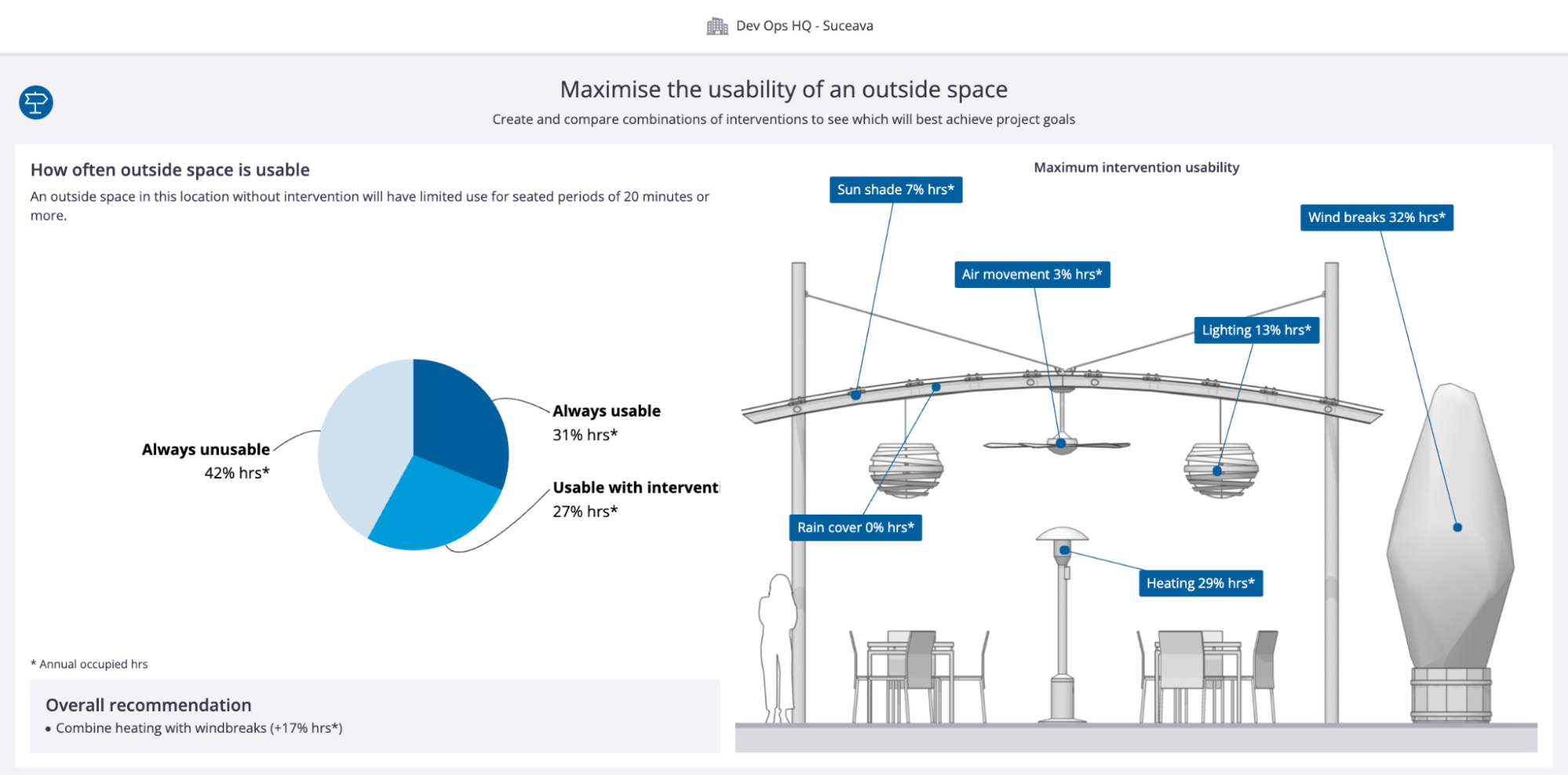
Quickly assess outside spaces in your climate
The left side of the top section helps you quickly assess the default and potential usability of outside space in this climate, during the operating hours associated with your building type.
In PreDesign, we define outside space usability as a space that could be used for a seated activity for at least 20 minutes. Examples might include things like:
- Having a formal or informal meal outside
- Watching some kind of sporting or outdoor event
- Taking a break to read a book
- Supervising children’s play activities
The summary divides the occupied hours into 3 different conditions:
- Always usable - how often you could conduct these activities comfortably outside without any design interventions
- Usable with interventions - how often these activities could be conducted comfortably provided some mitigating interventions were available
- Always unusable - how often these activities would be unsuitable / impossible outside even if all potential interventions were applied.
Generally speaking, it’s only considered to be unusable regardless of interventions if the temperature is very cold (less than 5°C / 41°F) or very hot / humid (over 35°C / 95°F).
The recommendation box beneath the chart can be used to quickly identify and communicate the most useful design interventions for the climate.
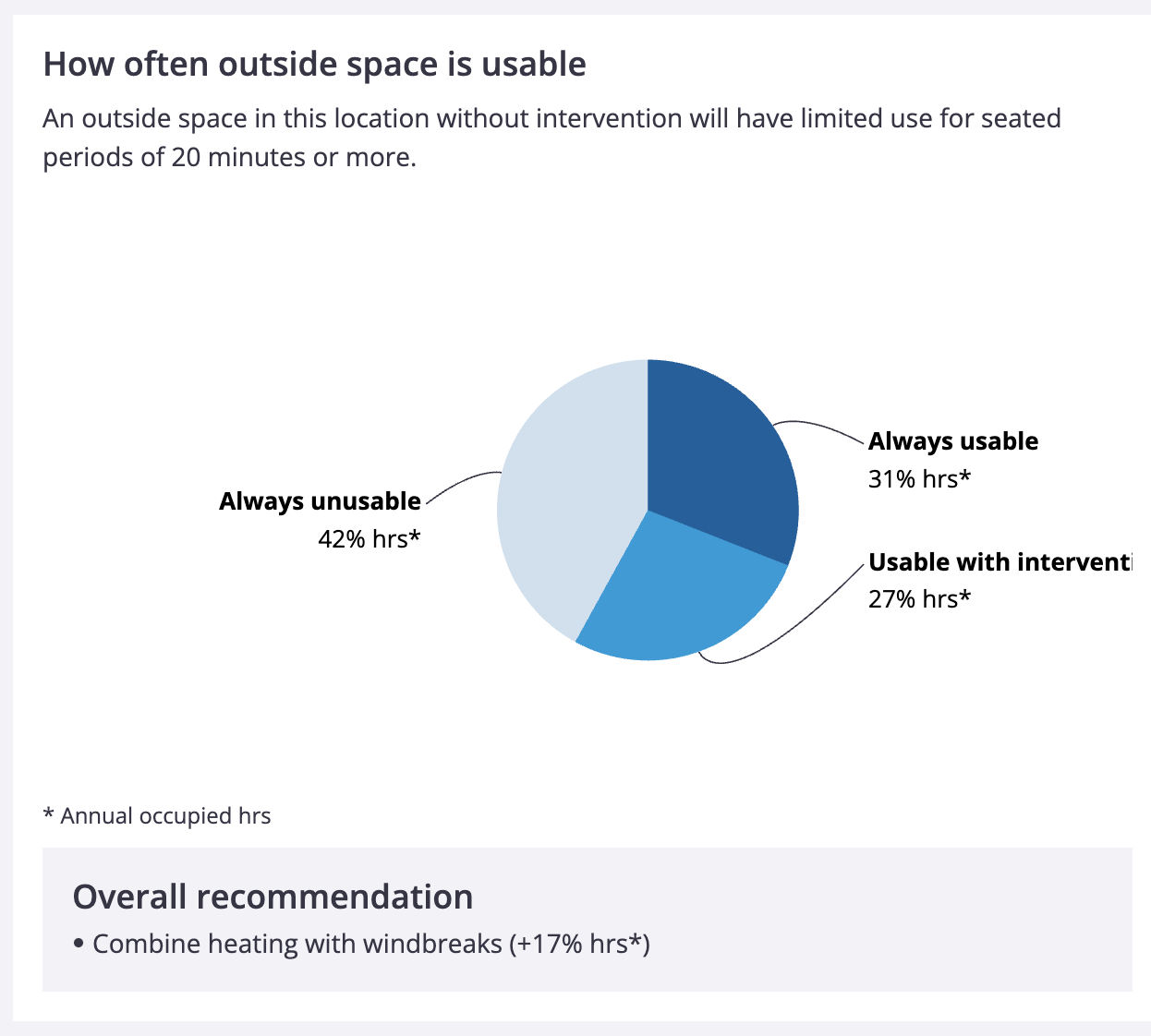
How often different interventions will be useful
The right side of the top section shows how often different interventions you might want to consider have the potential to be useful. It also helps you visualise what we mean when we describe different interventions that might apply to your project.
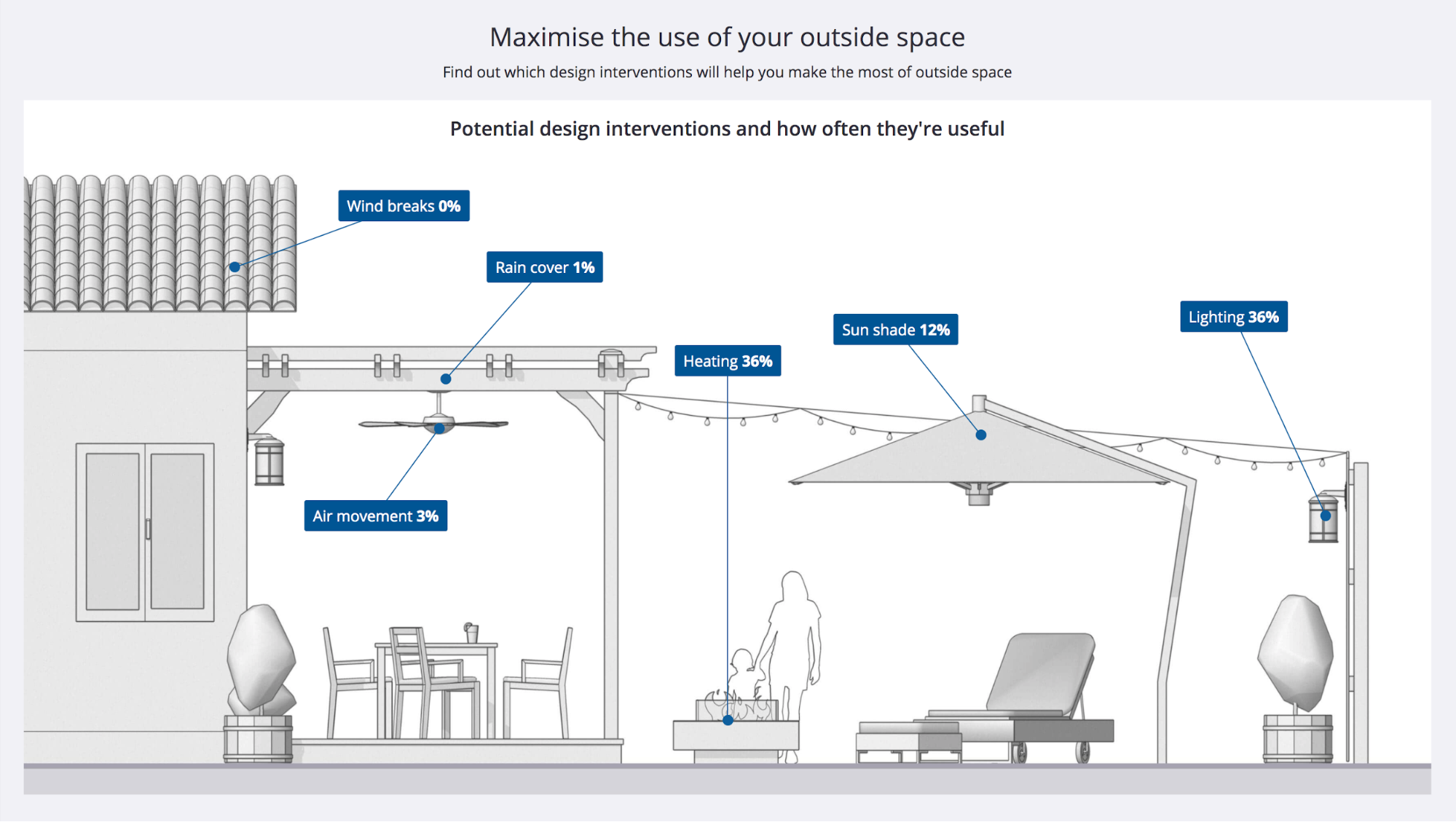
The diagram above points out the 6 different strategies that we consider with this feature. These are summarised in the table below.
| Intervention | What it is | How it helps | When we assume it’s needed |
| Air Movement | Something that provides air movement - eg a fan | Makes people feel cooler if it’s hot or humid | When the heat index is above 27°C / 80.6°F) |
| Heating | Something that provides radiant heat - eg a mushroom heater or fire pit | Makes people feel warm enough if it’s chilly (doesn’t work when really cold) | When the temperature is less than 15°C / 60°F but not colder than 5°C. |
| Lighting | Something that provides good light outside | Allows the space to be used when it’s dark | When outside horizontal illuminance is 5,000 lux |
| Rain Cover | Something that protects the space from rain | aAllows the space to be used in the rain or snow | When there is any recorded precipitation |
| Sun Shade | Something that blocks some or all of the sun when it’s hot | Helps prevent people feeling too hot because of the sun (when it’s hot) | When it is at least 20°C / 68°F and there is high solar radiation. |
| Wind Break | Something that blocks wind when it’s very windy and when it’s cool and breezy | Helps prevent people feeling too cold because of the wind (when the wind is cool) and helps prevent the space being unusable from high wind. | When it’s below 20°C / 68°F and there are light winds / breezes. Anytime it’s windy. |
The percentage for each intervention shows how often that intervention would be useful. Sometimes interventions will be useful but not enough to make the space usable (for example, rain cover is shown here to be useful even if it’s 5°C outside at the time it’s raining).
What interventions make the most sense for my project?
Perhaps you are wondering, OK - what’s the best case scenario for making outside space useful in this climate? Or maybe - How effective is the design I am currently considering likely to be?
The next section helps you understand the impact of different intervention combinations, so you can work out the best design strategy for your project and communicate that to your team.
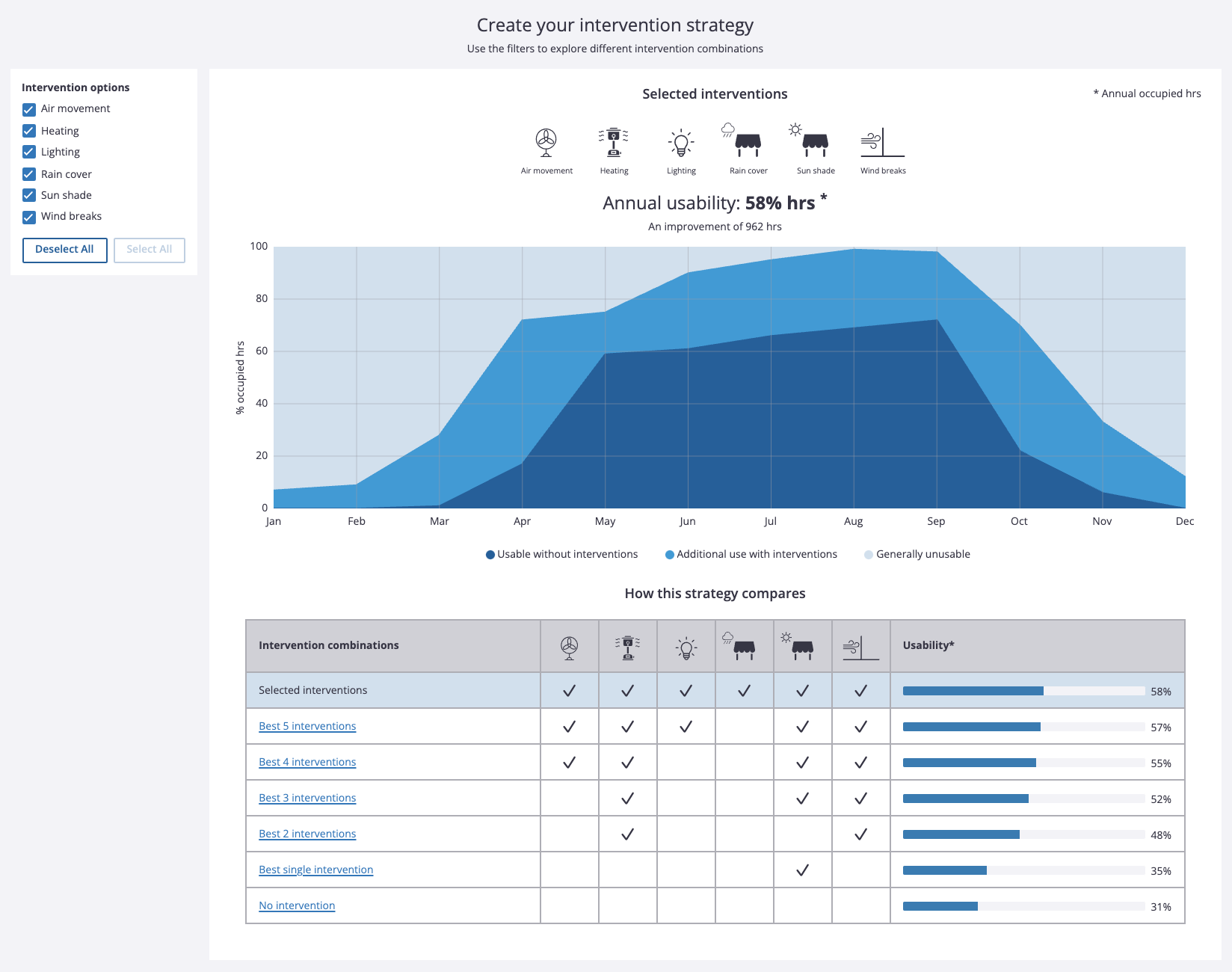
On the left side, the intervention options are listed and can be toggled on or off to see the effect of different combinations.
The chart shows you the usability of outside space (during occupied hours) by month across the year:
- Dark blue shows when outside space would be usable without any help (i.e. design interventions). In the example above, it’s usable 60% of the time in June without any added help.
- Light blue shows how much extra use you would get from outside space if the selected design interventions were implemented. Here you can see if you had everything available then in June, the outside space would go from being usable 60% of the time to usable 90% of the time.
- Grey shows when outside space will not be usable, even with all the interventions applied. You can see here even with all this help, in June the outside space is still unusable 40% of the time.
Use this chart to explore different design combinations and, if you want, show your team what happens when different interventions are added.
Help to work out what you really need.
The table beneath the chart helps show how the combination you’ve selected matches up against the best combinations possible and what those combinations include.
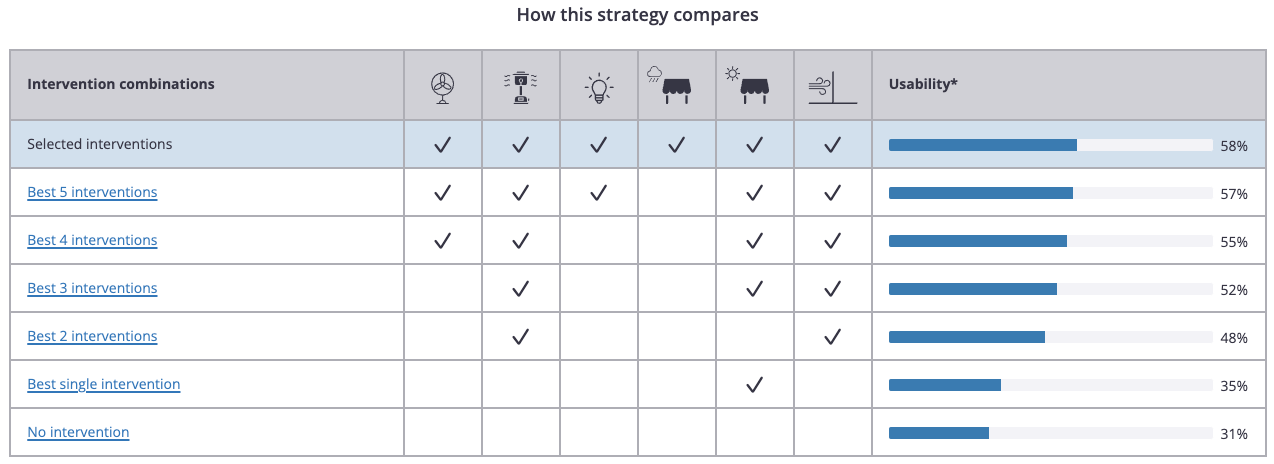
Use this section to make sure you haven’t missed out something important in your design approach.